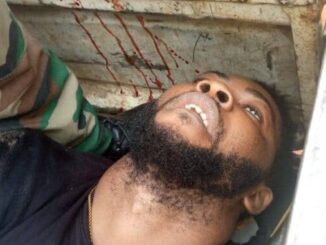these “companies” are state owned.
In order for us to understand why some folks are cautiously optimistic about this
project, we need to look at examples of Chinese “investments around the world in
developing countries; in our case underdeveloped. Let’s take the Sri Lankan
experience; where the Sri Lankan Port was financed by one of Beijing’s largest state–
owned enterprises, the Hambantota Port Development Project.
With close proximity
to the world’s busiest shipping lanes, the forecast was for a strong base for fund
raising. But with tens of thousands of ships passing by along one of the world’s
busiest shipping lanes, the reality was that the port drew only 34 ships in 2012 (The
New York Times-June 25, 2018). With the obvious loss, the government struggled to
make payments. Under heavy pressure and series of renegotiations, the Sri Lanka
government had no option but to hand over the port and 15,000 acres of land
around it to the Chinese for 99 years last December. The Chinese have been
known to play hardball when it comes to debt collection.
Interestingly, many believe that the Chinese are allergic to the internal politics of their
host countries; in comparison to UK, France or USA. That could be the case, but not
if they have investments and contracts to protect. So where did you think those red
T-shirts, Okadas, other promotional materials and the Le 30,000.00 came from
during the last elections in Sierra Leone ? Now you know why that Chinese guy was
dancing during one of our political rallies last year. Were there any obvious threats
from the opposition party to tear up previously agreed contracts, if it came to power?
Chinese companies have been known to pump large sums into campaign funds of
“friendly political parties” that agree to their terms. They have been known to impose
their own preferred companies in the bidding process; as a condition to obtain loans.
In some cases, the conditions for loans have been “no open bidding” process
(WikiLeaks). Some call these home economics.
There are two ways you can subjugate a country; the sword or debt. I know which
the Chinese prefer. Against such a backdrop, there is no doubt that what passes for
loans, support, assistance, debt, or whatever you want to call it, always comes with
conditions. Beware of the “SMALL PRINT”; for the devil is in the details. But before
we turn a frosty look at Chinese investments in Africa in general, and the Lungi
Bridge in particular, it was worth remembering the following. Firstly, our President
has just launched the bidding process. This is not to say that the Chinese are, or will
be the final winning bid for the Lungi Bridge. But don’t rule the Chinese out as major
contenders.
With our President’s assurance that the bridge will not cost you and me a shilling to
build, how will this “gift” be paid for? Some have suggested that it will be operated on
a toll system; taking a leaf out of EBK’s “How to pay for your Road”, book Two, 2
nd
edition. I still can’t figure out the use of the tolls at Mile 38 and 47, other than as
cash cows to fund another debt. Have they reduced journey times or congestion?
Don’t answer that. How much will it cost commuters to use the bridge? How many
users will it need to make it cost effective or revenue generating friendly? Some may
say that this is not the time to “look a gift horse in the mouth”. But should we “beware
of Greeks bearing gifts”? In case, just in case there is a breach of contract, would the




